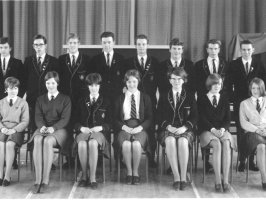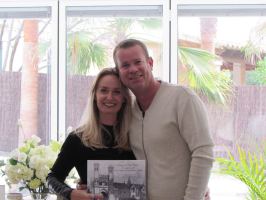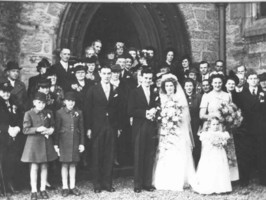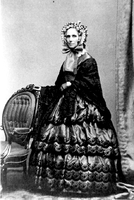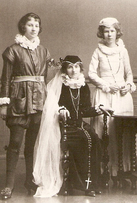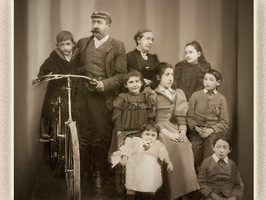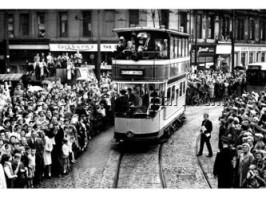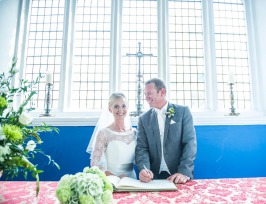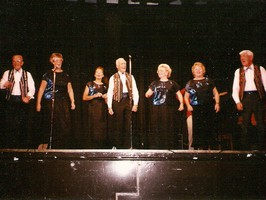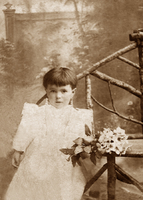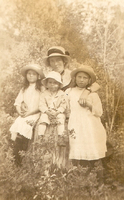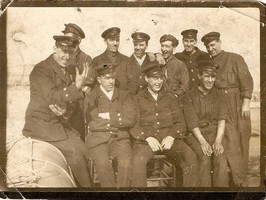
An example of an article that highlights the result of research carried out by Blake Court: Published in the 'Helensburgh Advertiser' and at http://www.helensburgh-heritage.co.uk/
From meter reading to the UN
by Donald Fullarton
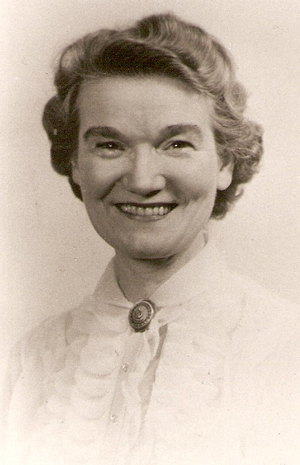 IT is quite a journey from cycling around the town on behalf of the Helensburgh Gas
Company to a senior post at the United Nations, but that is what happened to a lass from Shandon.
IT is quite a journey from cycling around the town on behalf of the Helensburgh Gas
Company to a senior post at the United Nations, but that is what happened to a lass from Shandon.
Margaret Gillatt Orr Allan, who left the burgh in 1925 and died in New York in 1982, finished her career as Head of Documents at the UN and retired in 1965, two years after she received the MBE.
Alistair Quinlan has supplied the story of Margaret, who was his great aunt and the sister of William Orr, a civil engineer in the Helensburgh Burgh Surveyor's Office and later Deputy County Surveyor for Argyll.
Born at the family’s Garelochside home on March 21 1898, she was educated in Helensburgh and as a young woman worked first for the Gas Company in the office and cycling around the town to read gas meters, and then for a time in the Burgh Chamberlain’s office at the Municipal Buildings.
In 1922 at a fancy dress Ball at the Victoria Halls in Helensburgh, Margaret was approached by a young man from Lamlash on the island of Arran who at the time was working in a Clyde Street bank. His name was Cameron Allan and he had gone to the Ball dressed as a North American Indian.
He had also invited another partner to the Ball but on spotting the redhead he had seen cycling past the bank, he left his partner in the care of his brother and subsequently filled Margaret’s card for the whole of the evening.
Alistair says: “It was only a few weeks before Cameron, his mother and siblings were due to emigrate to the United States, but what was he to do about Margaret? He apparently asked her father, James Orr, for his permission to marry her — but not yet!
“It was on the basis that he would become established in the USA and then Margaret would follow. James gave his blessing, and she must have agreed to this arrangement too. Cameron subsequently sent her an engagement ring from the USA, which her father put on her finger.”
Margaret (pictured below left in 1949) left Helensburgh on St Valentine's Day 1925 on the Anchor Line ship Cameronia, bound for New York, not joining the ship at Glasgow like all the other passengers.
Instead, thanks to a friend, the ship’s tender collected her from Helensburgh Pier — and she later recalled: “The whole town had gathered to see me off.”
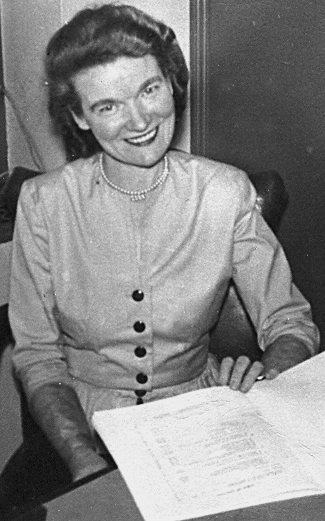 When she arrived in New York on February 22 she left the ship to join her husband-to-be and his family.
When she arrived in New York on February 22 she left the ship to join her husband-to-be and his family.
A newspaper article the next day recorded that there were 16 ‘Scotch’ brides-to-be on the ship and as the 22nd was George Washington's birthday and thus a public holiday, they could not be married and so were kept in an hotel.
Margaret and Cameron married several days later in New York, where they set up home, and had three children, all registered as British citizens, before Cameron died suddenly in late 1937.
The Allan family rallied round and helped, but despite being from a background which believed that a mother’s only employment should be in the home, Margaret was determined to keep her family together and to provide for them.
She found her first job in the Christmas rush of 1939 working for the Reader’s Digest, followed soon after by a position with the British Purchasing Commission in Manhattan.
Then, when the United States entered World War Two she went to work for Sir William Stephenson, known as ‘Intrepid’, in Documents in British Security at the Rockefeller Center, later becoming Head of Documents.
“She recounted that she’d often turn up for work on a Monday morning to find that the office walls had been ‘rearranged’ over the weekend,” Alistair said. “Although her duties could not be described as front line, she did once offer a tip-off which resulted in a spy being identified.
“She and her co-workers were instructed not to recognise or greet one another if they met on the street. Her children, still quite young, were not sure what their mother did — but despite that they were told not to talk about where she worked.”
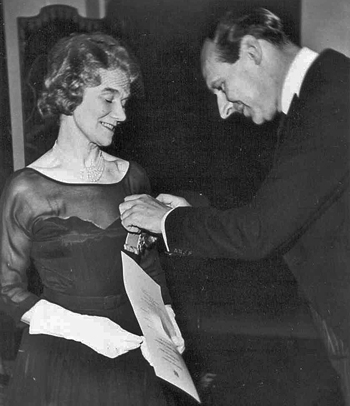 During this period she developed a unique secret filing system, which even years later was recognised by Margaret
Thatcher, then British Prime Minister.
During this period she developed a unique secret filing system, which even years later was recognised by Margaret
Thatcher, then British Prime Minister.
At the end of the war she joined the British Mission to the newly formed United Nations, again as Head of Documents, and served in this post until she retired.
As many African nations joined the UN, she trained their employees in the systems they needed to become familiar with, including one which she had designed to keep track of speeches at the UN.
Awarded the MBE for her service to the British Government in the 1963 birthday honours, she was invested with the medal at the annual Queen’s Garden Party in the grounds of the British Embassy in Washington DC by the then Ambassador, Sir Richard Ormsby-Gore (right).
She died in New Rochelle Hospital, New York, on November 19, 1982 after a short illness. The funeral service was held in Eastchester Presbyterian Church where she had been ordained as one of their first women elders.
Margaret was survived by two daughters — Margaret June Shabb, of Charleston, West Virginia, and Helen Cameron Noah, of Hartsdale, New York — a son, the Rev W.Cameron Allan of Glen Cove, New York, and seven grandchildren.
--------- 0 ---------
Ballet dancer escaped from labour camp
THE EXTRAORDINARY story of a young ballet dancer’s traumatic journey from southwestern Russia to Helensburgh has just been compiled by her nephew.
Alistair Quinlan, who grew up in the burgh but now lives in Ashford in Kent, kindly agreed that the Trust could retell Vera Valerianovna Dobudoglo’s life on this website.
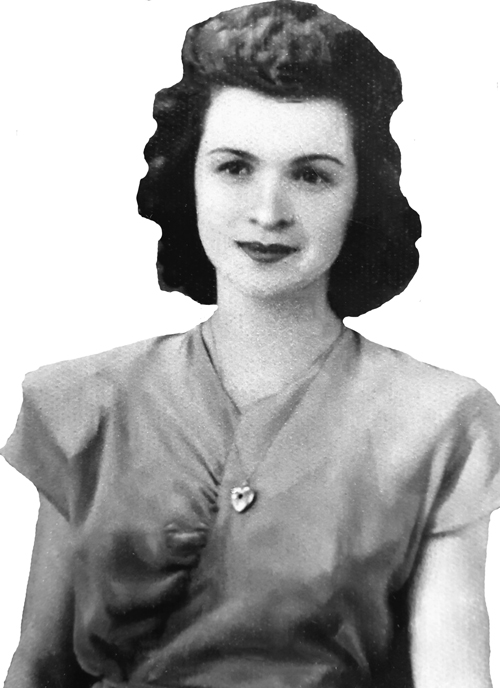 Vera (right),
originally Вера Валериановна Добудогло, is now 95 and living
with her eldest son Ronald, a retired psychiatric nurse, in Canterbury, Kent.
Vera (right),
originally Вера Валериановна Добудогло, is now 95 and living
with her eldest son Ronald, a retired psychiatric nurse, in Canterbury, Kent.
Her mother was a member of a well-known family called Rochegova (Рощева) and she is a cousin to the celebrated artist Anna Rochegova.
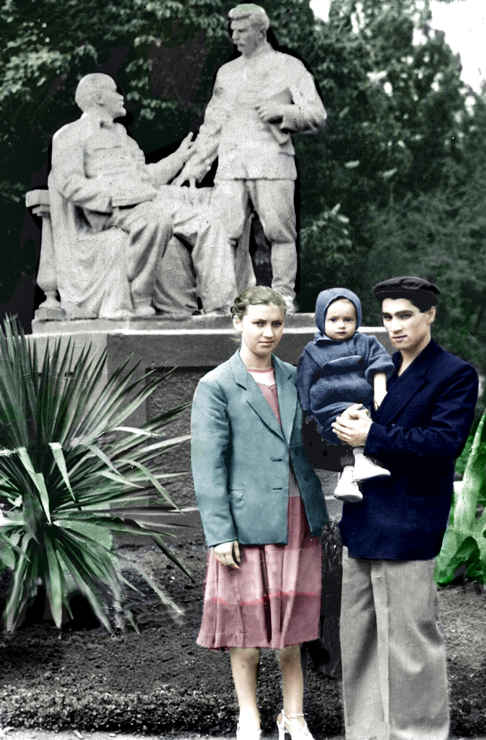
Vera (pictured with her parents in front of a statue of Lenin and Stalin) was born in 1925 to Valera Dobudoglo and Nina Rochegova, in the port city of Taganrog just to the east of Ukraine on the Taganrog Sea, a town which is also the birthplace of celebrated playwight and short story writer Anton Chekhov. When a young child and a talented dancer she won a place at the Bolshoi Ballet School.
At the age of 16 in October 1941, she was at home when Taganrog was occupied by two German SS Divisions, which marked the end of her dancing.
Only Vera and her mother were at home as several years before — about 1938 — during Stalin’s pogroms, her father, an architect and a member of the ‘Union of Soviet architects of the USSR’ had been woken in the middle of the night by the NKVD and arrested.
Many, many years later, due to her son Ron's efforts, she discovered that her father was perched on the edge of a pit, and then he was shot in the back of the head.
From the first days, the occupation regime started deportation of the citizens to Nazi Germany for forced hard labour.
Nazi Germany needed workforce, and the population census held by Germans in occupied Taganrog in February 1942 revealed possibilities for displacing citizens into Germany or the occupied territories.
The Bürgermeisteramt organised a labour exchange in the building of the municipal school no.8. The first mass deportations through this organisation took place in April 1942.
The people were convoyed on foot by the police and military to Primorskoe village near Mariupol, and taken by train to Stalino, where the central ‘distribution center’ for the south was located.
A file with photographs and fingerprints for each Taganroger sent for work in Germany was produced. The file documented the possibilities for his or her use depending on age, profession and health condition. The second wave of mass deportations was from June to August 1943.
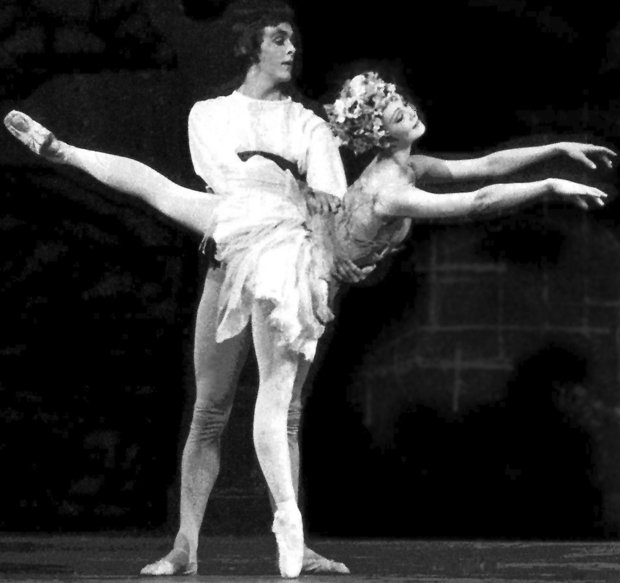
In 1942 Vera (pictured right during her Bolshoi days) was taken to a forced labour camp called Schalksmühle in North Rhine-Westphalia in Western Germany, where she was put to work in an engineering factory as slave labour.
The camp was surrounded by barbed wire. They were fed daily on cabbage soup and once a week were given a small ration of black bread.
As she had learned some German at school, Vera was used by the factory manager as an interpreter, and probably because of her good looks and manner, he liked her and treated her fairly well.
As the war was drawing to a close all of the forced labour was moved by the Germans on foot from place to place heading west, and at times working in the fields. She recalls backbreaking work lifting potatoes.
While being kept in a compound overnight, she and a friend scaled the wall and escaped, and were on the run for several days before running into the Allied forces. Vera was taken to a camp for displaced persons to await repatriation to the USSR.
While there she heard of a friend who did not want to take his place on transport taking some of them to re-settle in Greece, and so she took his place.
As it transpired this was a fortunate move for her, as captured and forced Soviet citizens were not always welcomed home with open arms.
She lived with, and as a member of the Pavlides family, just outside Athens, and was accepted as their daughter.
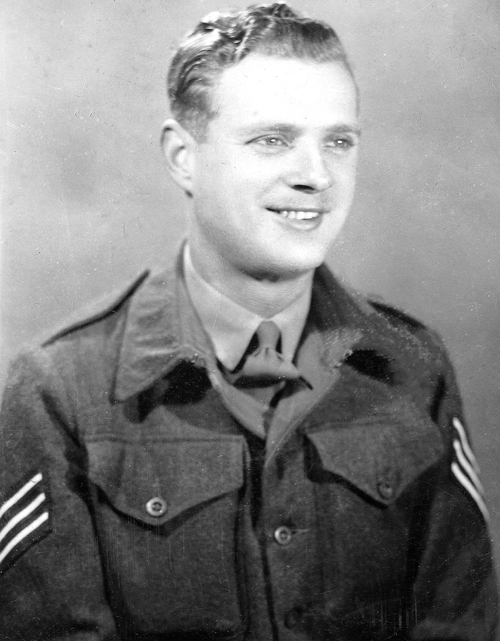
It was here that she met David Ronald Winton (left), who was serving in the Military Police in the aftermath of World War Two.
David was the son of Willie and Cathy Winton of 150 West King Street, Helensburgh, and grandson of David and Kate Winton, who lived in Rhu where Kate was the postmistress.
Towards the end of the war he had been working for Barclay, Curle & Co. Ltd. at Clydeholm Shipyard in Whiteinch as a Ship’s Draughtsman.
He was a member of the Home Guard, and he was also a Lieutenant in the Army Cadet Force, which made him a member of the Territorial Army.
In 1945 he applied to the Ministry of Labour and National Service for a position in the Palestine Police Force. His application was successful.
He served for some time in Palestine and was in Jerusalem when in 1946 the King David Hotel was bombed by the Zionist underground organisation, the Irgun. He was transferred to Greece, where in Athens he met Vera. They were married at the Church of St Paul’s in the city on January 3 1948. Soon after, Vera found herself on a ship bound for Liverpool.
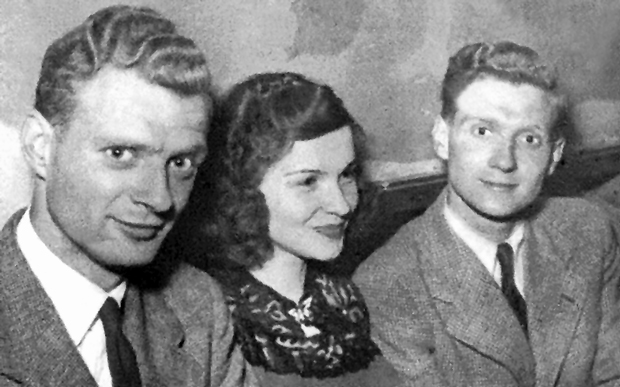 From there she made her way to
Helensburgh to live with her parents-in-law at 150 West King Street. (The couple are pictured right with David's brother Jack at a function in the Queen's Hotel).
From there she made her way to
Helensburgh to live with her parents-in-law at 150 West King Street. (The couple are pictured right with David's brother Jack at a function in the Queen's Hotel).
It was there that later in 1948 her first-born, Ronald, was born.
The couple, who moved to Ireland and then England, had several children, but the romance did not have a happy ending, and they parted after her husband had abandoned her and their children, not once, but twice.
On one occasion she was left penniless and on the streets with her children, ending up in a women’s refuge with just one bed to share between them.
After the second occasion when she discovered that her then partner had been molesting one of her teenage daughters, she gathered up her children and on the very same day, with no plans, she headed for London to do the best she could.
She found work in a residential hotel in London and in time she rose to become manageress.
When the hotel closed she moved to Canterbury with her daughter Hazel, who only a few years later died of cancer at the age of 42.
Alistair said: “Vera has never displayed an ounce of self-pity for what life has doled out to her, and she remains a very positive and inspiring woman and one lady I am proud to call my aunt.”
